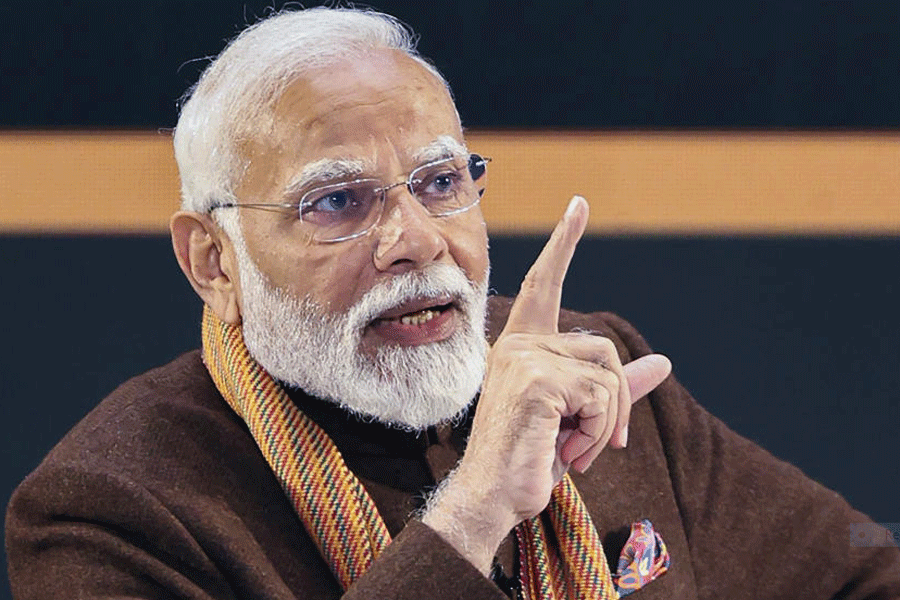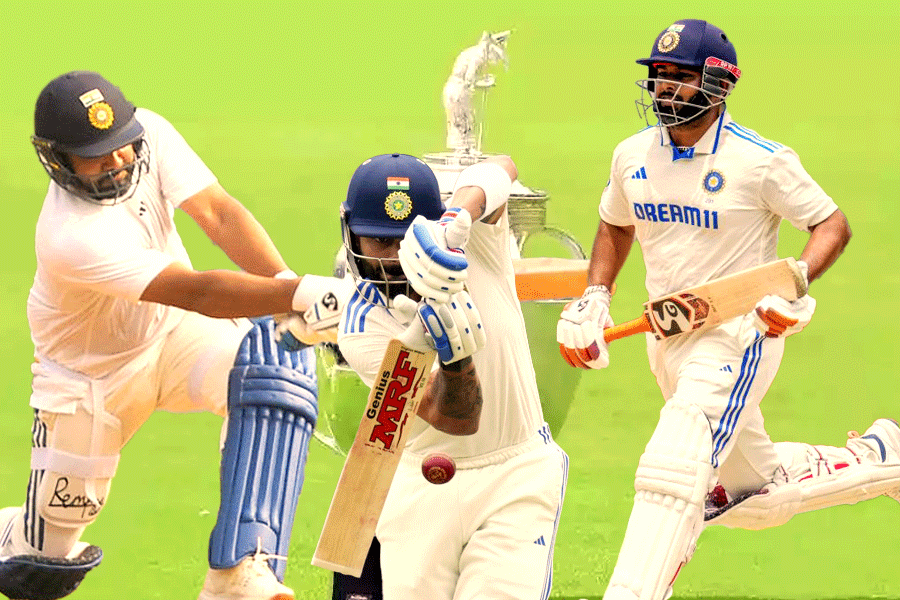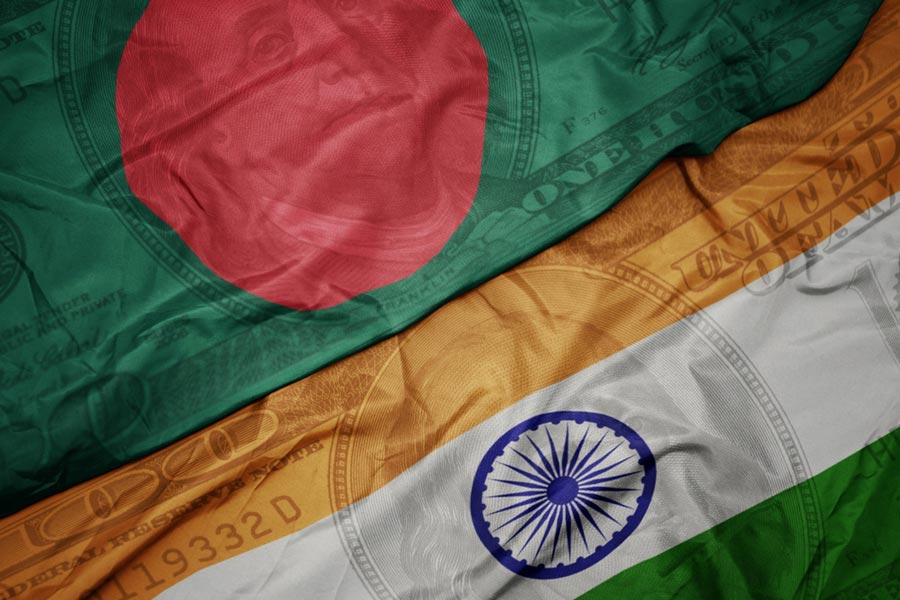Prime Minister Narendra Modi on Monday showcased his government’s schemes and achievements — some of them contentious — at his Pariksha Pe Charcha programme, an annual interaction with schoolchildren to address their exam anxieties.
Two students asked Modi — in pre-recorded questions flashed on a screen at the venue, the Bharat Mandapam convention centre here — how he handled stress and how schoolchildren could develop a positive attitude like him.
Modi said he had full trust in the country’s 140 crore people and used their collective strength to address all problems, from poverty to pandemic.
He said 25 crore people in India had escaped poverty on his watch — an official claim that several economists have questioned, contesting the methodology used in arriving at that figure.
"Every government in India has to face the problem of poverty. It is a problem. And I did not sit silently; I looked for a solution. I realised that poverty will go when every poor person is determined to beat poverty," the Prime Minister said, speaking in Hindi.
"If he only has dreams (to beat poverty), can he achieve it? My responsibility is to make him capable by giving him a pucca house, toilet, education, benefits under the Ayushman Yojana, piped water. If I can liberate him from everyday problems and empower him, he will be confident about beating poverty."
He added: "In my tenure across the last 10 years, 25 crore people in the country have come out of poverty. I could have spent time like others. I trust the collective strength of the people; I never worried about what I should do. I am a tea vendor."
Modi is said to have sold tea for a while as a youngster.
The Niti Aayog had this month released a discussion paper claiming that nearly 25 crore Indians had escaped poverty between 2013-14 and 2022-23. It used the Multidimensional Poverty Index (MPI) methodology to arrive at the figure.
However, multiple experts have said that MPI is not the appropriate methodology for the purpose and that India’s traditional method of defining the poverty line, based on consumption expenditures, should have been used.
They have added that the improvements in health and education during Modi’s tenure draw substantially on the investments made in public welfare by the previous government.
At the Pariksha Pe Charcha, attended by over 3,000 schoolchildren, parents and teachers, the Prime Minister portrayed India’s Covid management as successful.
"You know the Covid crisis: it was not an ordinary challenge. The entire globe was struggling. I could have said, 'It's a global crisis and you manage it yourself'. But I did not. I came on TV every day and spoke to the people," he said.
"I told them to clap, to sound the bell, to light the lamp. These measures do not kill the corona(virus) but they created a collective strength to fight (it)."
Modi’s advice to Indians early on during the pandemic to clap and bang on plates had widely been ridiculed as unscientific.
During the pandemic's brutal second phase in the summer of 2021, India was accused of grossly underreporting the deaths. The international media reported that thousands of the dead were being tossed into rivers or burnt on mass pyres because of a shortage of cremation space.
Part of the blame was laid on the Modi government's premature declarations of victory over the pandemic and its withdrawal of some of the restrictions on travel and gatherings.
However, India's mass vaccination programme drew global praise.











